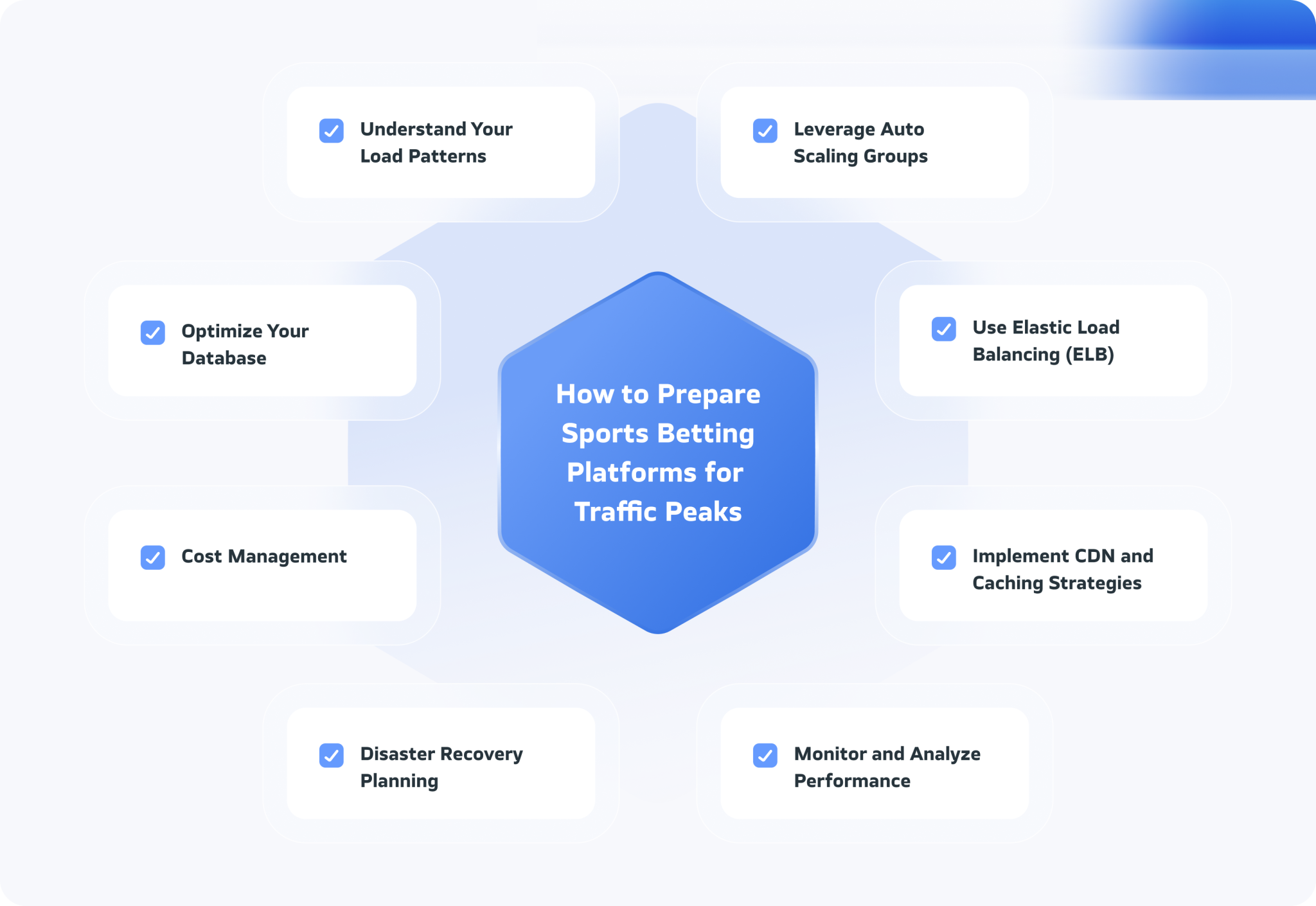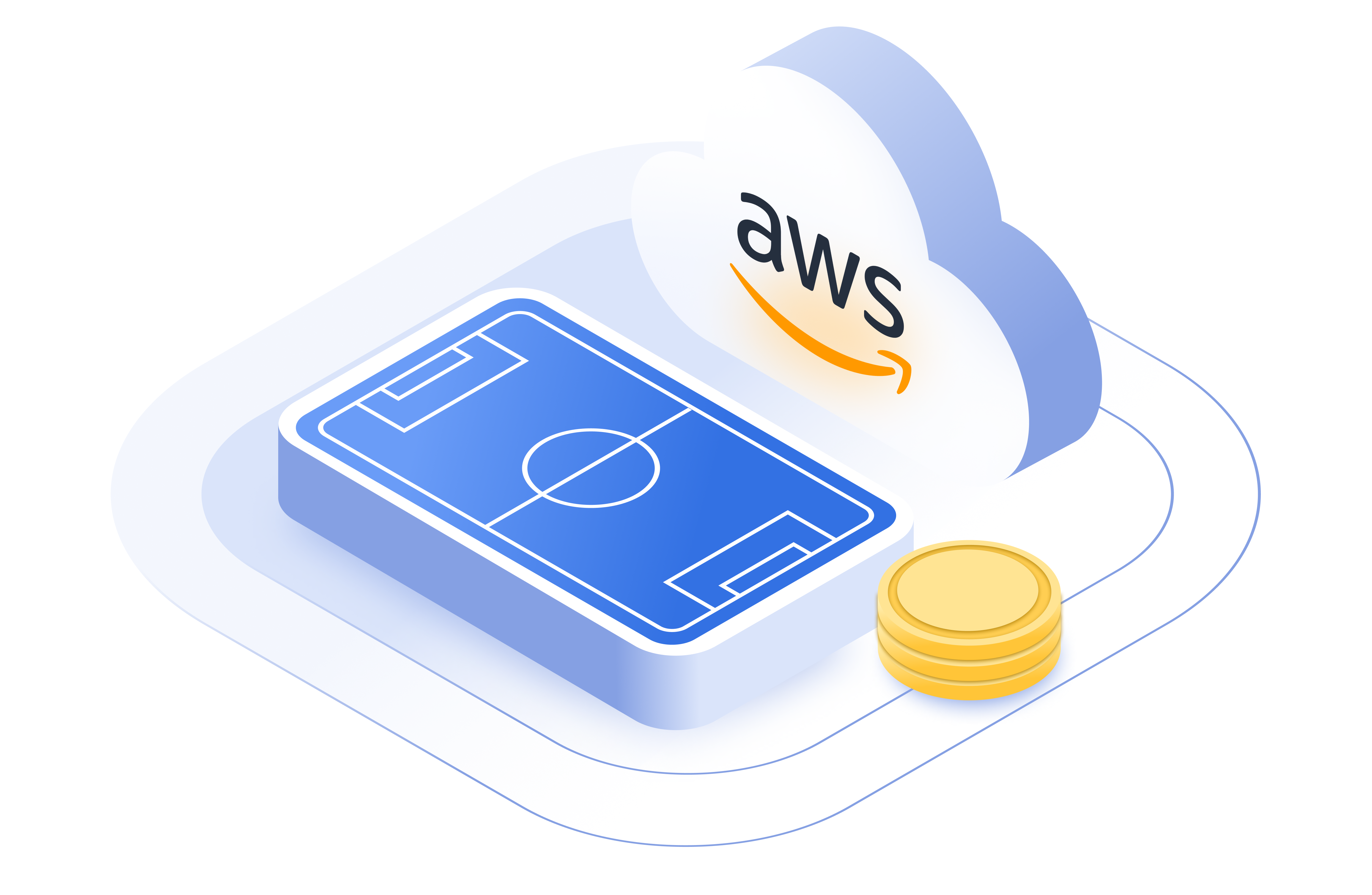In the dynamic and high-stakes world of sports betting, popular events like the UEFA Euro 2024 can significantly challenge the traffic capacity of sports betting platforms. Increased user activity and betting transactions during this kind of event can strain even the most robust ones.
To ensure a smooth user experience, sports betting platforms need to effectively scale their AWS infrastructure to handle the surge in demand. Through proactive monitoring, optimizing resources, and implementing best practices like for example using Elastic Load Balancing or implementing CDN and caching strategies, platforms can smoothly manage peak traffic and capitalize on the opportunities presented by such major events.
In this article, we will provide top tips on preparing your platform for increased user traffic from a technical perspective. Read on to learn more.
Sport Betting Platforms – Rising in Popularity
In recent years, sports betting platforms have experienced a surge in popularity, driven by a combination of factors including technological advancements, regulatory changes, and the increasing acceptance of sports betting as a mainstream activity. The global sports betting market has experienced substantial growth over the past decade. According to Grand View Research, global sports betting market size was valued at USD 83.65 billion in 2022 and is projected to reach USD 182.12 billion by 2030, growing at a CAGR of 10.3% from 2023 to 2030. This growth clearly demonstrates the increasing popularity and widespread adoption of sports betting platforms worldwide.
Major sporting events, such as the UEFA European Championship, play an important role in fueling user activity and engagement on sports betting platforms. These events lead to a significant increase in betting transactions and user interactions. For instance, the 2021 Euro tournament witnessed record-breaking betting volumes across many platforms, underscoring the immense popularity of sports betting during major sporting events. So how should you prepare for that peak?

1. Understand Your Load Patterns
The first step in preparing for an event like the Euro is to understand your typical load patterns and how they change during major events. You can basically use historical data from previous tournaments or similar high-traffic periods to analyze and predict peak loads. This will help in estimating the scale and type of resources needed.
2. Leverage Auto Scaling Groups
AWS Auto Scaling plays a vital role in automatically adjusting the number of EC2 instances in response to traffic demand. By setting up Auto Scaling groups, you can guarantee that your application expands to manage increased loads and contracts when the demand decreases. Key configurations include:
Setting up appropriate scaling policies: Define scaling policies based on CPU utilization, memory usage, or custom metrics.
Warm-up periods: Configure warm-up periods for new instances to be ready to handle traffic.
Limiting: Limit maximum resources when scaling to the planned budget.
3. Optimize Your Database
The database layer can become a bottleneck during high-traffic events. To mitigate this:
Use Amazon RDS with Read Replicas: Scale read-heavy applications by creating read replicas of your database.
Implement caching: Use Amazon ElastiCache to cache frequently accessed data, reducing the load on your database.
Employ Amazon Aurora: Aurora can automatically grow storage as needed, up to 64TB, and supports up to 15 low-latency read replicas.
4. Use Elastic Load Balancing (ELB)
Elastic Load Balancing helps distribute incoming application traffic across multiple targets, such as EC2 instances, containers, and IP addresses. This ensures no single server bears too much load, improving fault tolerance and application availability. During peak events:
Enable Cross-Zone Load Balancing: This allows you to balance the load evenly across all availability zones.
Configure Health Checks: Ensure ELB performs health checks to route traffic only to healthy instances.
5. Secure Your Application with Proxy Against DDoS Attacks
Protect against DDoS attacks using proxy services:
CloudFlare or Akamai: Use these services to shield your application from DDoS attacks, ensuring continuous availability and performance during peak traffic times.
6. Implement CDN and Caching Strategies
Using a Content Delivery Network (CDN) like Amazon CloudFront can significantly reduce latency and improve the load time for users worldwide. Additionally, implement caching strategies to reduce the need for repeated database queries:
Cache static content: Such as images, scripts, and stylesheets.
Cache dynamic content: Implement application-level caching for dynamic content where feasible.
7. Monitor and Analyze Performance
Continuous monitoring is essential to ensure your infrastructure can handle the load:
AWS CloudWatch: Set up CloudWatch alarms and dashboards to monitor key metrics such as CPU utilization, latency, and error rates.
AWS X-Ray: Use X-Ray to trace user requests and identify performance bottlenecks in your application.
8. Disaster Recovery Planning
Even with the best preparation, things can go wrong. Ensure you have a robust disaster recovery plan:
Multi-AZ Deployments: Deploy your application in multiple availability zones to ensure high availability.
Regular Backups: Automate regular backups of your data and test your recovery process.
9. Cost Management
Scaling up resources can significantly increase costs. Use AWS Cost Management tools to monitor and control expenses:
AWS Budgets: Set budgets and get alerts when your usage exceeds defined thresholds.
Cost Explorer: Analyze your spending patterns and identify cost-saving opportunities.
Conclusion
Effectively preparing for major events like the UEFA European Championship involves careful planning and the ability to scale infrastructure efficiently. Using AWS’s comprehensive suite of tools and services enables sports betting platforms to meet heightened user demand, deliver a seamless experience, and maintain high availability and performance.
By engaging in proactive monitoring, optimizing resource allocation, and adhering to best practices, these platforms can wisely manage peak traffic and leverage the opportunities presented by significant events. Such thorough preparation is essential for providing an exceptional user experience during periods of high traffic.





